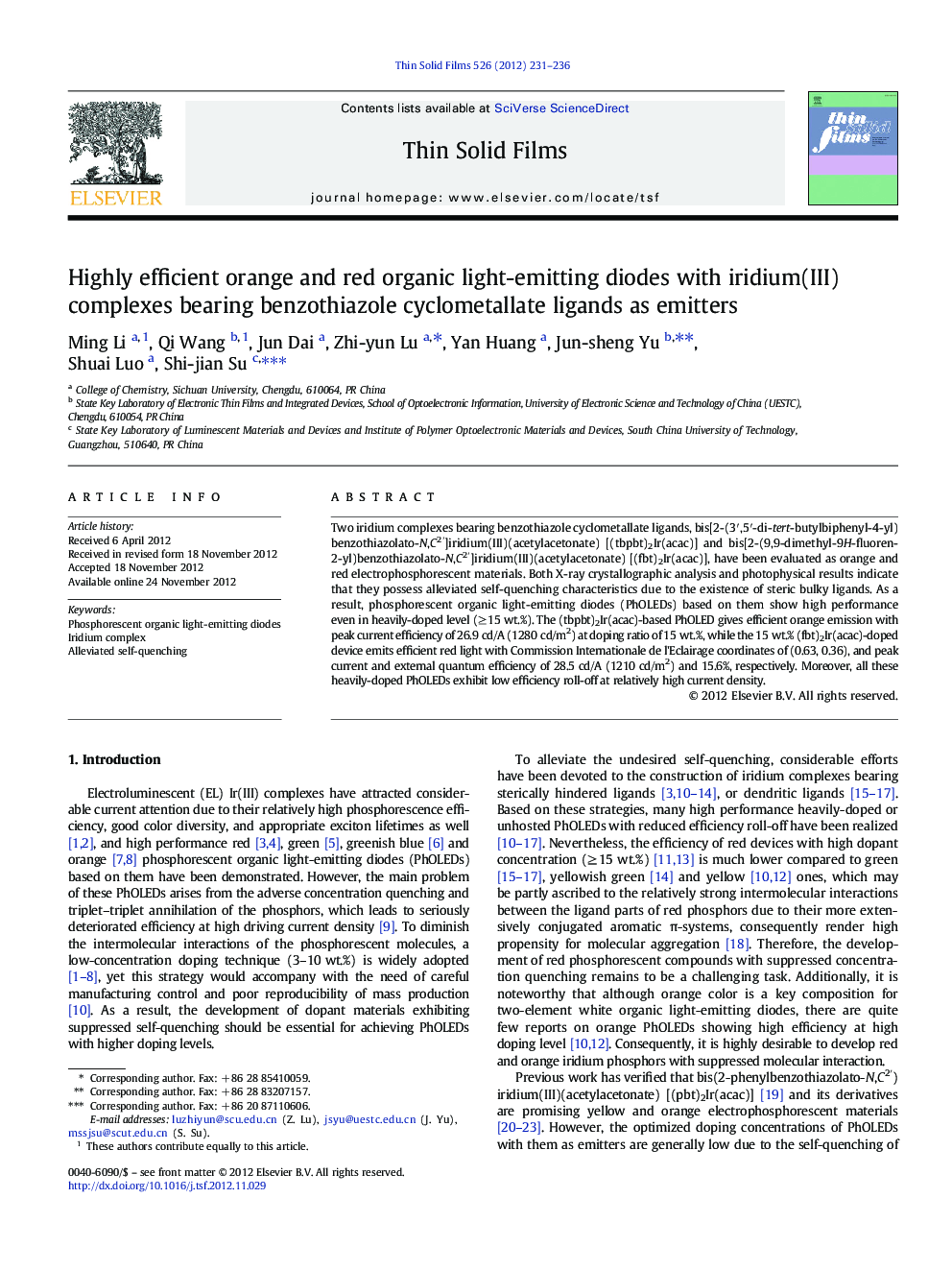| کد مقاله | کد نشریه | سال انتشار | مقاله انگلیسی | نسخه تمام متن |
|---|---|---|---|---|
| 1666471 | 1518078 | 2012 | 6 صفحه PDF | دانلود رایگان |

Two iridium complexes bearing benzothiazole cyclometallate ligands, bis[2-(3′,5′-di-tert-butylbiphenyl-4-yl)benzothiazolato-N,C2′]iridium(III)(acetylacetonate) [(tbpbt)2Ir(acac)] and bis[2-(9,9-dimethyl-9H-fluoren-2-yl)benzothiazolato-N,C2′]iridium(III)(acetylacetonate) [(fbt)2Ir(acac)], have been evaluated as orange and red electrophosphorescent materials. Both X-ray crystallographic analysis and photophysical results indicate that they possess alleviated self-quenching characteristics due to the existence of steric bulky ligands. As a result, phosphorescent organic light-emitting diodes (PhOLEDs) based on them show high performance even in heavily-doped level (≥ 15 wt.%). The (tbpbt)2Ir(acac)-based PhOLED gives efficient orange emission with peak current efficiency of 26.9 cd/A (1280 cd/m2) at doping ratio of 15 wt.%, while the 15 wt.% (fbt)2Ir(acac)-doped device emits efficient red light with Commission Internationale de l'Eclairage coordinates of (0.63, 0.36), and peak current and external quantum efficiency of 28.5 cd/A (1210 cd/m2) and 15.6%, respectively. Moreover, all these heavily-doped PhOLEDs exhibit low efficiency roll-off at relatively high current density.
► Two iridium complexes with bulky ligands are developed as orange/red emitter.
► Organic light-emitting diodes using these phosphors show low efficiency roll-off.
► High performance devices could be achieved under high doping ratio of ≥ 15 wt.%.
► The high device efficiencies arise from the reduced self-quenching of the phosphors.
Journal: Thin Solid Films - Volume 526, 30 December 2012, Pages 231–236